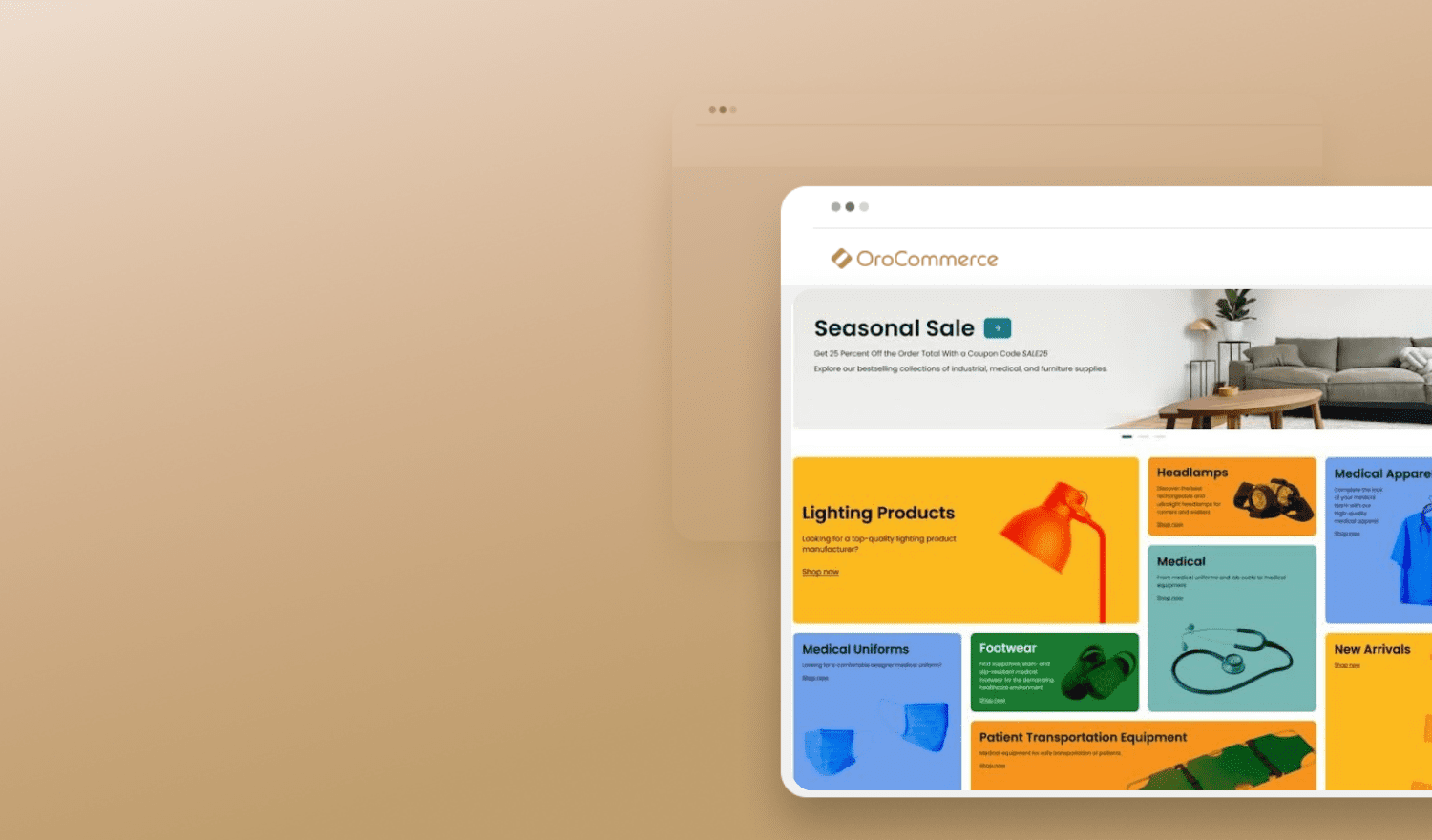A punchout catalog is a web-based product catalog automatically provided by the vendor’s website in return to the request sent by the buyer’s e-procurement system. One important benefit of punchout catalogs is that the buyer can only create and manage a shopping cart within the frame and according to a workflow established by his corporate e-procurement solution. So, instead of going to the vendor’s eCommerce website to do the shopping, which may be difficult to track by the management, the buyer is “punched out” to relevant catalogs by the purchasing system and works with them directly from that system. After the buyer is finished selecting items from the catalog, the system converts the final shopping cart into a requisition, which is then typically submitted for approvals by the management.
Other benefits of punchout catalogs for buyers include the consolidation of multiple catalogs from different vendors within the single e-procurement system, simplified buying experience as well as approval workflows, direct access to personalized pricing and other custom content, automated document flow, and faster, more transparent procurement processes.
Due to their considerable role for more efficient procurement, punchout catalogs are a critical part of the B2B eCommerce adoption for companies who want to acquire or partner with large clients and governmental organizations. However, they are no full substitute for B2B eCommerce websites. These two operate together to ensure your company meets the needs of different types of customers.
Why PunchOut Catalogs are Important for Sellers
Large business enterprises and government entities need a way to simplify their purchasing processes and closely manage their purchasing spend. These organizations rely on e-procurement systems from companies like Coupa, Procurify, and Tradogram to manage the entire purchase cycle. But, in today’s B2B environment, these buyers also demand access to eCommerce capabilities offered by B2B vendors. Ideally, they want vendors’ eCommerce websites to directly connect with their e-procurement systems. Punchout catalogs is arguably the best way to make it happen.
Until recently, punchout catalogs used to fall exclusively within the purview of major suppliers. However, as the cost of the technology has dropped, medium to small size businesses can now afford to offer punchout catalogs as well. This means small suppliers can now compete with large suppliers for clients from Fortune 500 and state-owned giants. Being punchout-ready is one of the key requirements for moving upmarket and expanding your marketing opportunities.
In addition to the competitive advantage on larger customers acquisition and growing sales, the punchout technology also enables sellers to optimize their operations. Punchout catalogs eliminate the tedious task of importing catalogs into the buyer’s e-procurement system. Once the buyer-seller interchange via punchout catalogs is in place, catalogs, products, and prices are updated automatically.
The Great B2B eCommerce Websites Boom
While punchout catalogs have been specifically designated for large B2B buyers who rely heavily on their e-procurement systems, B2B eCommerce websites are designed to streamline the buying process for all types of buyers and sellers. Essentially, a B2B eCommerce website replicates standard B2C eCommerce capabilities that everyone is accustomed to, but also takes those capabilities to a whole new level.
As a matter of fact, B2B transactions are much more complex than B2C. They correspond to how companies do business with their B2B clients. You need to be able to offer personalized catalogs and pricing for each client online, protected, of course. You need different levels of access depending on the customer representative’s buying role – can they only submit an RFQ or actually place a purchase order? Payment terms, such as net 30 or net 60, also feature a wider range of options compared to B2C. Finally, there are more flexible marketing automation, content management, analytics, and customer relationship management that B2B eCommerce solutions provide to discover and seize the unique opportunities with each B2B client.
Over the past few years, the B2B eCommerce technology has matured to become a mainstream solution for sellers. As a result, B2B online sales have skyrocketed. Statista reports that the global B2B eCommerce market values US$12.2 trillion, which is over 6 times that of the B2C market. Numerous other surveys confirm that B2B eCommerce implementation is currently one of the key priorities for B2B companies. So, should your company focus entirely on B2B eCommerce or put punchout catalogs into order first?
B2B eCommerce Websites vs Punchout Catalogs
Both punchout catalogs and B2B eCommerce websites are valuable in the way how they digitize the purchasing/selling process. However, to understand your priorities, you need to bear in mind their differences. Punchout catalogs were designed to cater to the needs of the largest B2B customers. However, this technology has certain limitations and inconveniences for a seller. When a buyer comes to a website through a punchout catalog, they don’t make a purchase; they make a requisition. It still must be converted to a PO and approved. Moreover, while thousands of companies use punchouts, there is no one true standard. This means companies must decide which customers to support with punchout catalogs based not only on their purchasing requirements but their choice of e-procurement systems as well. There are also fewer tracking, self-service, and marketing automation capabilities for punchout catalogs compared to a full-blown B2B eCommerce website.
A B2B eCommerce website is ready to serve large and small companies alike. Remember, a very little percent of businesses use e-procurement. If your B2B eCommerce website offers custom catalogs and supports multiple levels of user access roles, you actually enable buyers to manage their spend without an e-procurement system or punchout catalogs. A robust B2B eCommerce website combines all the benefits of a content management system (CMS) with a customer relationship management (CRM) system and provides checkout workflows tailored to the buyer’s needs. At a B2B eCommerce site, the checkout may take various forms, whether a paid purchase, a purchase order (PO), or a sales order (SO). Finally, just like a punchout catalog recognizes when the buyer has multiple stakeholders involved in the purchase and accommodates multiple levels of approval, a true B2B eCommerce website also supports this typical use case. Note, however, that this may not be the case for B2B websites built upon a modified B2C platform.
Which Should You Offer?
B2B commerce is complex. While at its core B2B still relies heavily on relationships, it is increasingly necessary to provide self-service buying capabilities and take advantage of every sales tool possible. Today’s B2B buyers demand an ecosystem that is focused on making their buying experience as easy and efficient as they are accustomed to when shopping online for their personal needs.
For the largest buyers that rely heavily on their e-procurement systems, punchout catalogs definitely make sense. But given the rapidly rising popularity of B2B eCommerce, they shouldn’t be your only digital offering. Just as product brochures don’t replace sales representatives, punchout catalogs can’t replace full-scale B2B eCommerce websites.
If you want to do business with small and medium-sized companies as well as large enterprises, a B2B eCommerce website is key. It should start with robust CMS capabilities, corporate account and access management, and the ability to create as many custom catalogs and price lists as you need. It should provide a checkout workflow that meets your customer needs, whether it generates a PO or SO, and support required payment terms and payment providers integrations.
Ultimately, selecting a B2B eCommerce platform that allows for integration with punchout catalogs will let you get the best of both worlds. As a leading B2B eCommerce platform, OroCommerce offers an extension for punchout catalogs and enables you to seamlessly connect them with your buyers’ e-procurement systems. If you look for the most balanced approach to adopt B2B eCommerce, look for technology solutions that support integrations as well as offer rich out-of-the-box functionality and support flexible customizations. It’s hard to tell what features you may need in a year from now. Don’t cast aside punchout catalogs or EDI for eCommerce, take advantage of them with the right customers. But more than anything, be sure to take advantage of the massive B2B eCommerce upswing with a website that has all the bases covered.




